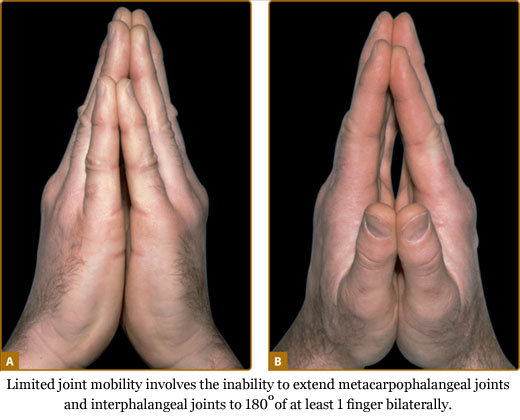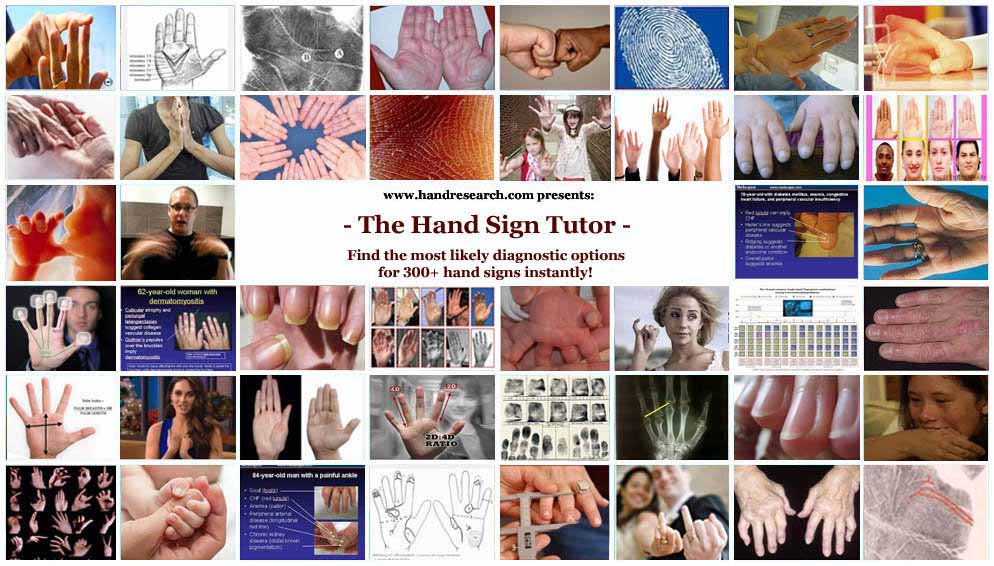Most likely diagnostic options for limited joint mobility - NOTICE: this involves the inability to extend metacarpophalangeal joints and interphalangeal joints to 180 degrees of at least 1 finger bilaterally, not to be confused with normal 'stiff fingers' (ranked by 'weight' for the general population):
- ASSOCIATED MEDICAL CONDITIONS:
• diabetes mellitus [~30% | 1:12 | weight: 0,5]
• hypertension [~10% | 1:5 | weight: 0,4]
• scleroderma [?% | 1:4K | weight: ?]
- ASSOCIATED PSYCHOLOGICAL CONDITIONS:
• Slightly beyond LJM, the related condition involving 'stiff fingers' has been reported to be about twice more common (25%) in a group of introverted Dutch students, who score very low for the Big Five personality dimension Extraversion (the 1997 study also reports that 'very flexible fingers' have been observed 2.5x more often (62.5%) in Extraversion high scorers).
[1st figure = prevalence hand sign in condition | 2nd
figure = prevalence condition in GP | 3rd figure =
estimated hand sign weight for condition relative
to GP (>0,5 = present in majority of GP)]
|

Quick summary:
limited joint mobility is especially known for it's significance in diabetes mellitus.
[In every 100 limited joint mobility cases in the general population (GP) you can expect about
is 50 diabetes mellitus cases with limited joint mobility, 40 hypertension cases, etc.]
|

